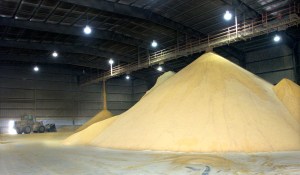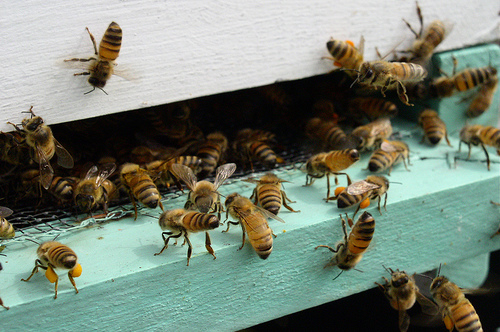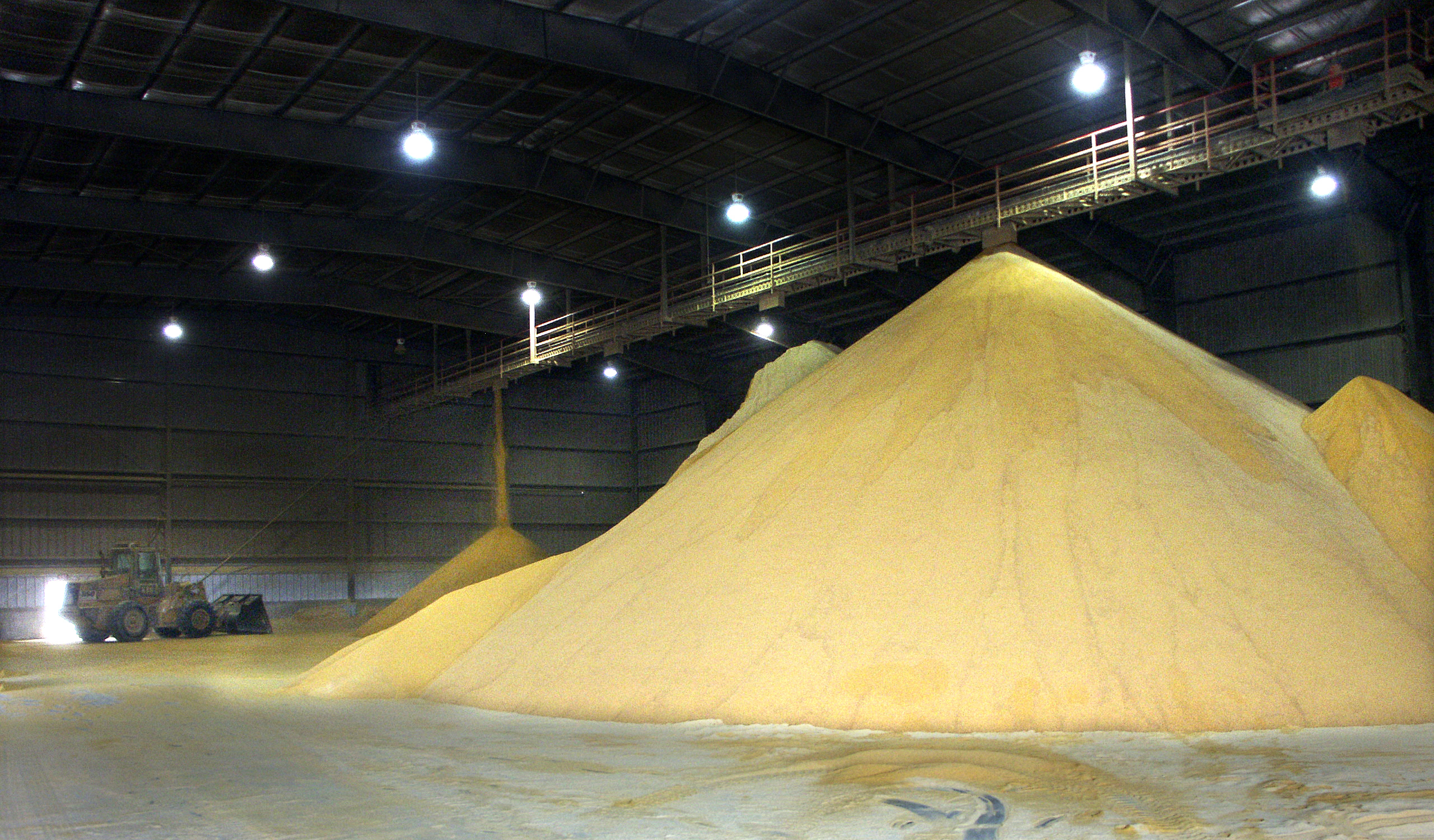
Photo by USDA.
Last year, while touring a fairly small, pasture-based farmstead cheese company, I found myself in a giant feed barn with a group of curious foodies. It was one of the last stops before the cheese tasting, so no one wanted to linger. But I have a distinct memory of what it was like to stand there staring at the giant piles of grains, thinking: “The cows eat all this, on top of the grass?”
Like many dairies and livestock operations, the farm owners had been able to lower their feed costs by using the byproducts of industrial food and fuel production. Towering around us that day, we were told, were giant piles of canola pellets, cotton seeds, and soy hulls (from oil production), and dried distillers grains (from ethanol production). I bookmarked the image in my mind and I’ve been considering it ever since, especially as I’ve heard about the aquaculture industry moving toward a grain-based model to avoid feeding wild seafood to farmed fish. In both industries (agriculture and aquaculture), it’s not hard to see why distillers grains are so popular. They’re affordable and the ethanol industry has been pushing them hard in recent years, because, as Tom Philpott pointed out a few years back, “finding a high-value use for this ‘coproduct’ is absolutely vital to the corn ethanol project.”
On the one hand, it’s hard to argue that those spent grains shouldn’t get used somehow. On the other hand, I’ve often wondered: How does the ethanol production process impact these byproducts? Well, some new research might just get us closer to answering that question.
In a post on the Institute for Agriculture and Trade Policy’s Think Forward Blog, policy researcher Julia Olmstead points to the fact that distillers grains often contain traces of antibiotics left over from a process used to control bacteria in the distillation process. As she writes, “Ethanol producers frequently add antibiotics like penicillin and erythromycin to fermentation tanks to control bacteria (bacteria compete with yeast for sugar, and too much bacteria can decrease ethanol yields).”
Just how much of the resulting distillers grain contains antibiotics is still in question. But it doesn’t look so good. Olmstead points to a yet-to-be published study out of the University of Minnesota that appears to have been leaked by a hog farming trade publication. She writes:
The data, which has not yet been published but were confirmed in a call I made to [the researcher], indicated antibiotic residues in all 117 samples tested, and antibiotic residue active enough to inhibit E. coli growth in one of the samples.
National Hog Farmer paints the study results as reassuring, but low-level antibiotic activity is a pathway to antibiotic resistance, as the antibiotics kill off susceptible bacteria leaving the “superbugs” to thrive. Even one sample in 117 testing positive for antibiotic residue is an indication that we don’t know the fate of these antibiotics or if they’re contributing to the antibiotic resistance epidemic.
According to this Minnesota Public Radio piece from 2009, the FDA did look into the issue in 2008. The piece reads:
“A year ago we put a survey out to the FDA field people to collect samples of those distillers grains, and start analyzing for antibiotic residues,” said Linda Benjamin, a chemist with the FDA’s Center of Veterinary Medicine.
Samples were requested from 60 ethanol plants, including some in Minnesota. She said testing showed that many contained antibiotics, mainly four types. “Penicillin, virginiamycin, erythromycin and tylosin,” said Benjamin.
At this point the story gets murky. Benjamin won’t say if any of the antibiotics exceeded federal guidelines. Those guidelines are part of the problem; they’re a patchwork and far from definitive on what levels of antibiotics in distillers grain are safe.
Maryn McKenna, who writes a lot about antibiotic resistance over on her blog Superbug, also picked up on the new data. She points to the somewhat promising fact that:
Following those 2008 tests, the FDA actually started a project sampling distillers grains from around the United States. And in its planned actions for this year, the agency has included a “draft guidance” specifically on the antibiotic-residue problem.
Considering it took a court ruling (and a 30-year lapse) to get the FDA to even consider acting on the evidence it has collected that connects antibiotic use in animals to antibiotic resistance in humans, this news isn’t terribly heartening.
But I’m especially concerned for the conscientious dairy and meat producers, who don’t feed their animals antibiotics but — faced with some of the highest grain prices in decades — may find themselves having to cut corners on feed. It would be a terrible feeling to learn you’d been contributing to the problem of antibiotic resistance — all while working (or in some cases even struggling) to do what you thought was right.




